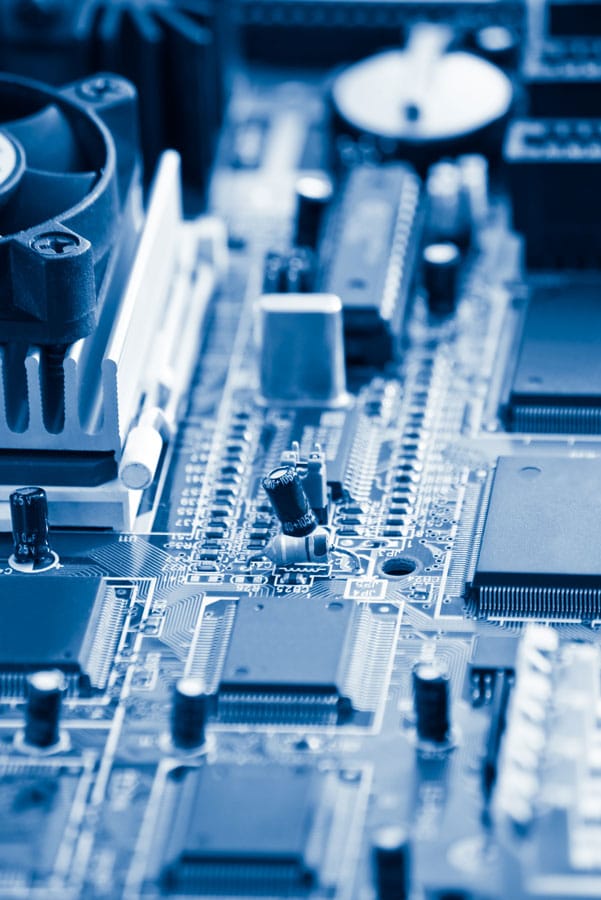Enhancing Wi-Fi communication with effective CSI approximations
Wireless networks already play significant roles in education, business and our everyday lives. Further enhancement of our wireless communication speed and reliability will enable new applications, such as automatic driving, remote medical procedures and the Internet of Things (the interconnection of computing devices embedded in everyday objects to the internet) to become commonplace. Dr Zhenghao Zhang, a Full Professor with the Computer Science Department at Florida State University, and his research team are currently working on a project that will help make these applications possible.
Approximating CSI
Dr Zhang and his team are developing the theory and applications of efficient approximations of Channel State Information (CSI) in Wi-Fi networks. CSI describes the state of a communication link from the transmitter to the receiver and enables the adaption of transmissions to various channel conditions. This is crucial if reliable communication is to be achieved. Signals propagating from a transmitter to a receiver can undergo scattering, fading or just lose power with the distance that they must travel, so CSI has to be estimated at the receiver.

The CSI in Wi-Fi is required to establish the modulation parameters for technologies such as Multi-User Multiple Input Multiple Output (MU-MIMO), which enables transmission to several clients simultaneously, supporting environments where a number of users are accessing a wireless network at the same time. The CSI is usually measured at the receiver and then transmitted back to the sender. This involves significant overhead, such as on 20-MHz channels with 64 subcarriers i.e. carrier waves that are modulated to send additional information.
CSI is represented by mathematical vectors. The CSI vector for a single pair of antennae may comprise 64 complex numbers. It follows that a system of nine antenna pairs is represented by 576 complex numbers, and while Wi-Fi will not use all the available subcarriers, the transmitted feedback from nine antenna pairs often exceeds 1000 bytes. To reduce this overhead, a selection of methods has been employed to date in order to attempt to compress the CSI, but these approaches either achieve only modest compression ratios or reduce the accuracy of the CSI.
CSIApx offers highly effective CSI compression and CSI measurement techniques together with novel data transmission methods.
Dr Zhang and his team have discovered that CSI vectors in Wi-Fi networks can be approximated by a linear combination of as few as three sinusoids. (Sinusoids are mathematical curves that describe a smooth periodic oscillation, or wave, such as sine and cosine functions.) Further research has established that this result holds even when many non-negligible paths are present. These findings underpin Zhang’s development of CSIApx, an innovative compression methodology which offers high compression ratios with little loss of accuracy and the added advantage of low computation complexity resulting in a favourable reduction in overhead.

Research trials
Tests have demonstrated that unlike other methods, CSIApx can compress the CSI of 40 subcarriers into just six or less complex numbers. In addition, the decompressed CSI is very similar to the original CSI. Moreover, the main computation in CSIApx is straightforward vector algebra: it only requires evaluating the scalar (or dot) products of the CSI and a small number of constant vectors. This significantly lower computation complexity makes CSIApx ideal for hardware implementation.
It had already been established that CSIs are linear combinations of sinusoids derived from the physical paths within the wireless channel. Unlike previous methods, CSIApx does not entail the solving of complex optimisation problems in order to find parameters such as the number and characteristics of the paths in terms of the frequencies, phases, and amplitudes of the sinusoid waves. Instead, CSIApx approximates the CSI by employing linear combinations of a set of base sinusoids on fixed frequencies. Experimental results have shown that these approximations regularly achieve notably high accuracy. This technique is supported by the research team’s mathematical finding that a linear combination of sinusoids with constant frequencies can provide an accurate approximate for any given sinusoid within a frequency range. Furthermore, given that the whole CSI is a summation of individual sinusoids, and each sinusoid can be approximated by a few base sinusoids, then the complete CSI can be approximated too. This approximation is independent of the parameters of actual paths in the channel.
Dr Zhang and his team have tested CSIApx extensively, using both experimental and synthesised Wi-Fi channel data. The results confirm that CSIApx achieves excellent compression ratio with little loss of accuracy.
Benefits
Two major benefits arise from the researchers confining CSIApx to employ only base sinusoids on fixed frequencies. Firstly, computation complexity is dramatically reduced as there is no need to solve complex optimisation problems. Secondly, the base sinusoids have constant frequency values, so they do not need to be transmitted, thus improving the compression ratio and reducing the overhead.

In addition to CSI compression, the research will also lead to CSI measurement techniques together with novel data transmission methods. These can substantially improve Wi-Fi network efficiency and facilitate applications that increasingly depend on reliable high-speed wireless networks.
The outcomes of this research will be timely solutions for Wi-Fi networks for better supporting MU-MIMO or massive MIMO.
The knowledge gained throughout this project also offers advancement within the research field as Dr Zhang and his team reveal significant characteristics of a large class of wireless channels that until now have gone unnoticed. They also offer optimised methods for this group of wireless channels.
Broader impact
Throughout this project, Dr Zhang offers both graduate and undergraduate students the opportunity to learn through practical experience of such aspects as the algorithm design, implementation, and experimental evaluation of wireless networking. This experience has enhanced the students’ training, enabling them to pursue careers in engineering and education.
Furthermore, the research team has uploaded the data collected throughout this project in the form of the CSI traces from their experiments. This data can be freely accessed by students and researchers in order to support their own work. The project’s curriculum development activities also include employing the results obtained from this research in the teaching of both graduate and undergraduate networking classes.
Patent
The original version of CSIApx has already been patented. The research team are constantly improving this initial patented version with respect to the actual compression ratio achieved as well as the system’s theoretical foundation.

Improving wireless network speed
Dr Zhang explains that “By removing the bottleneck caused by the high overhead in CSI feedback and measurement, the outcomes of this research will be timely solutions for Wi-Fi networks for better supporting MU-MIMO or massive MIMO.”
The research team has been successful in the development of algorithms that can produce better CSI estimation and compression. These algorithms allow increasingly accurate and timely CSI updates and they will facilitate improvements in the overall performance of wireless networks. This will be of particular benefit to those networks with large MIMO, as MIMO systems are dependent on CSI to optimise their system transmission parameters.
These research findings offer highly effective, innovative solutions to significant issues within wireless communication. The discoveries made by Dr Zhang and his team will stimulate the development of higher performance wireless networks. Moreover, this research offers numerous benefits to a society that is increasingly dependent on access to faster, more reliable wireless networks.
Personal Response
What motivated your interest in researching approximations of CSI in Wi-Fi networks?
<=”acceptedanswer”> This is actually a quite interesting story. A few years back, my PhD student, Avishek Mukherjee, and I were trying to extract the path information in the CSI to find the angle of arrival of the signal. We failed miserably, because our method worked about half of the time, but we didn’t know why it worked and why it did not work. One day, I sat down and discussed it with Avishek. We realised that we were getting nowhere; however, we noticed that we actually did unintentionally accomplish something that seemed to be useful. That is, we somehow were able to write the CSI as the linear combination of very few sinusoids, which should lead to a good CSI compression algorithm. We wrote a paper on this discovery, which was the beginning of this project. </=”acceptedanswer”>